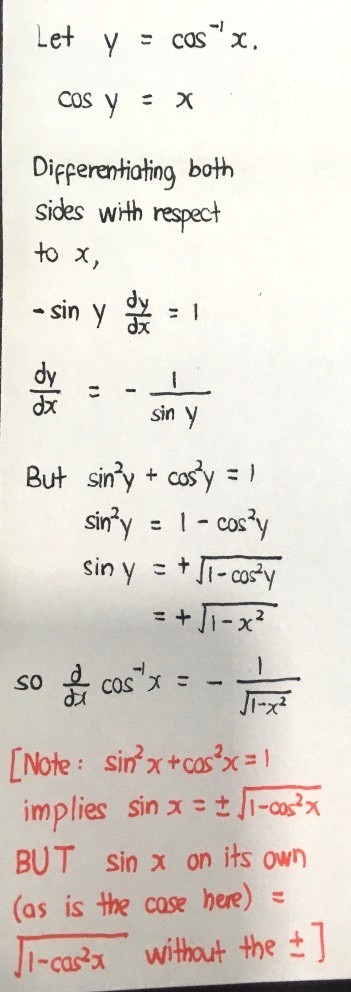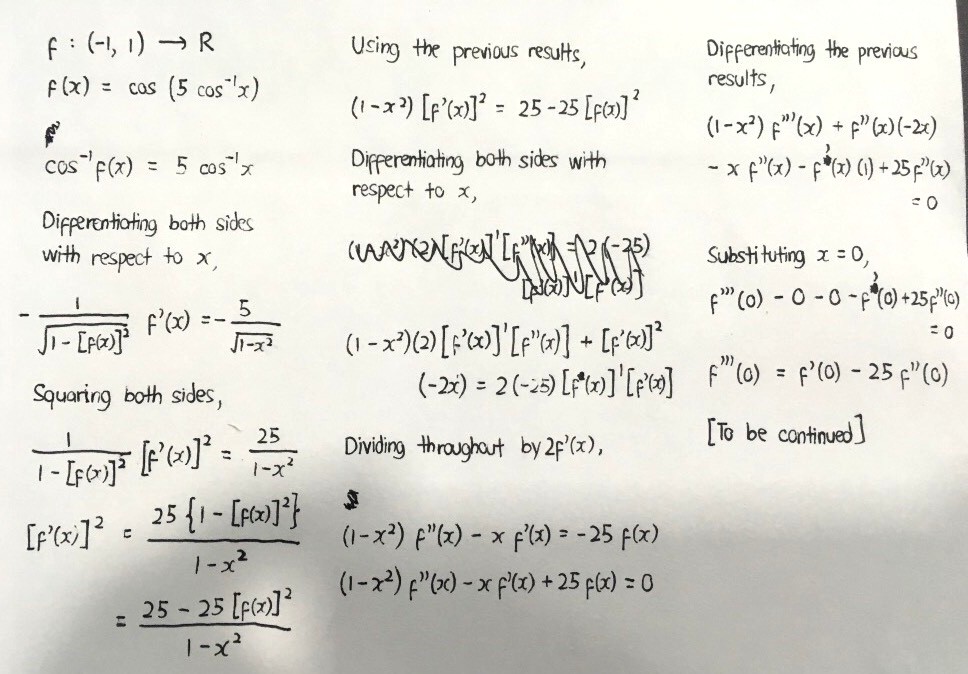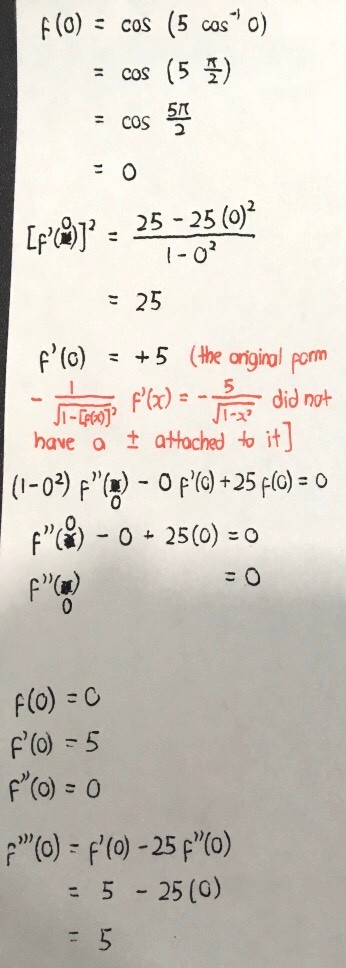Ask Singapore Homework?
Upload a photo of a Singapore homework and someone will email you the solution for free.

See 3 Answers
done
1 Upvotes
clear 0 Downvotes
First part
Here the sin y in -1/sin y comes as an “expression”, not an “equation”. Hence, when we express sin y in terms of cos y, there will not be a +- in front of the square root.
Here the sin y in -1/sin y comes as an “expression”, not an “equation”. Hence, when we express sin y in terms of cos y, there will not be a +- in front of the square root.
Date Posted:
5 years ago
done
0 Upvotes
clear 0 Downvotes
To be continued, due to lack of paper space
Date Posted:
5 years ago
done
0 Upvotes
clear 0 Downvotes
Done. I am very rusty in A Level Maths so I cannot guarantee that my answers are correct.
Date Posted:
5 years ago








when -1 < x < 1, 0 < cos-1(x) < π
sin y = sin(cos-1(x))
Since 0 < cos-1(x) < π,
0 < siny < 1
So sin y is always positive for this range. No ± is needed
Update: if you would like to know why it's restricted, you can check out this link :
https://www.themathpage.com/atrig/inverseTrig.htm#abs